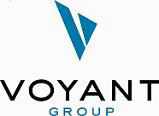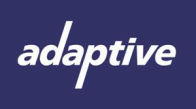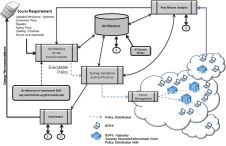AFFILIATIONS

ASMG is proud to be a member of the OMG, and actively participates in setting trusted information exchange approaches and standards by participating in the work of various committees and working groups. The Object Management Group (OMG) is an international, open membership, not-for-profit computer industry standards consortium. OMG member companies write, adopt, and maintain its standards following a mature, open process. OMG's standards implement the Model Driven Architecture™ (MDA™), maximizing ROI through a full-lifecycle approach to enterprise integration that covers multiple operating systems, programming languages, middleware and networking infrastructures, and software development environments. OMG's standards include: UML™ (Unified Modeling Language™ ); CORBA® (Common Object Request Broker Architecture); CWM™ (Common Warehouse Metamodel); and industry-specific standards for dozens of vertical markets. All OMG standards may be downloaded without charge at www.omg.org, which also provides additional information about OMG and its activities. For information on joining the OMG or other questions, please contact OMG by email at info@omg.org, by phone at +1-781-444 0404, or by fax at +1-781-444 0320.
ASMG Participation in OMG Task Forces:
• C4I DTF - Co-Chair
• Unified Profile for DODAF and MODAF Version 2 WG
• Emergency, Crisis, Major Event Management (ECMEM) SIG - Co-Chair
• Information Exchange Framework (IEF) Working Group
• Finance DTF
UPDM is an Object Management Group (OMG) initiative to develop a modeling standard that supports both the USA Department of Defense Architecture Framework (DoDAF) and the UK Ministry of Defence Architecture Framework (MODAF). The modeling standard is called the Unified Profile for DoDAF and MODAF (UPDM). The UPDM Group was setup to:
• Significantly enhance the quality, productivity, and effectiveness associated with enterprise and system of systems architecture modeling
• Promote architecture model reuse and maintainability
• Improve tool interoperability and communications between stakeholders
• Reduce training impacts due to different tool implementations and semantics
• Improve the integration between system of systems modeling and system modeling to support post acquisition life cycle design modeling
The UPDM Group consists of many companies distributed around the world. You can see a list of these companies in the member section on this web site.

Sparx Systems provides award winning UML 2.1 powered, team-based modeling environment embraces the full product development lifecycle, with high-performance visual tools for business modeling, systems engineering, enterprise architecture, requirements management, software design, code generation, testing and much more. A full life cycle tool to integrate your team and bring your shared vision to life. . For more information visit: Sparxsystems Website

The Voyant Group, LLC is an international consulting company providing strategic consulting, education and hands-on mentoring assistance to Global 1000 corporations leveraging model-driven approaches throughout their enterprise. Voyant provides professional consulting, mentoring and educational services concentrating on a visionary, yet pragmatic, application of Model Driven Architecture™ (MDA) to address increasingly complete business and technology needs, including business process management and enterprise architecture. For more information visit the Voyant Group Website:
http://www.thevoyantgroup.com.
AFFILIATIONS

The Software Revolution, Inc. (TSRI) provides automated legacy computer system modernization services to both government and industry. Our low-cost and low-risk services are derived from a highly advanced artificial intelligence-based software re-engineering toolset called JANUS Studio™. TSRI offers many services, but the four most unique are our ability to: (1) automatically transform, not just transliterate, a software application written in a 3GL legacy language into modern, platform-independent and true object-oriented target languages, such as C++, C#, Java, or J2EE; (2) re-factor the transformed code to improve that code's structure, performance and maintainability; (3) generate full UML documentation for both the "As Is" as well as "To Be" systems; and (4) transform monolithic legacy systems into a multi-tiered web-based applications. For more information visit: TSRI Website

Adaptive provides a web based and industry standards compliant Enterprise Knowledge Repository and related "Adaptations" to support Enterprise Architecture for large organizations and governments around the world and to address specific management challenges such as Business Process Management and IT Portfolio Management. Adaptive's technology enables organizations to understand and align critical enterprise assets and capabilities with objectives and strategies, and to reduce the time, cost and risk of adapting to continuous environmental change. For more information visit: Adaptive Website

Artisan® Software Tools is the world’s largest independent supplier of industrial-grade, collaborative modeling tools for complex, mission-critical systems and software. Artisan has delivered a stable, robust working environment to thousands of users across an extensive range of complex applications in demanding sectors including military, aerospace and defense, automotive, transportation, telecommunications, electronics and medical. For more information visit: Artisansoftware Website

ATEGO is the leading independent supplier of industrial-grade, collaborative development tools for engineering complex, mission- and safety-critical architectures, systems, software and hardware. Atego delivers a stable, robust working environment to thousands of users across an extensive range of complex applications in demanding engineering sectors such as aerospace, defense, automotive, transportation, telecommunications, electronics, and medical. Atego delivers the highly reliable, real-time embedded virtual machine solution (Aonix PERC®) for running Java™ programs deployed today and has the largest number of certified Ada applications (Aonix ObjectAda®) at the highest level of criticality. Atego’s standards-based tool suite, Artisan Studio®, provides comprehensive support for the leading industry standards, including OMG SysML, UML and Architectural Frameworks. Atego Workbench™ provides a fully integrated, collaborative engineering framework for the trouble-free deployment and maintenance of best-in-class tools for mission and safety-critical systems and software development. For more information visit: ATEGO Website







